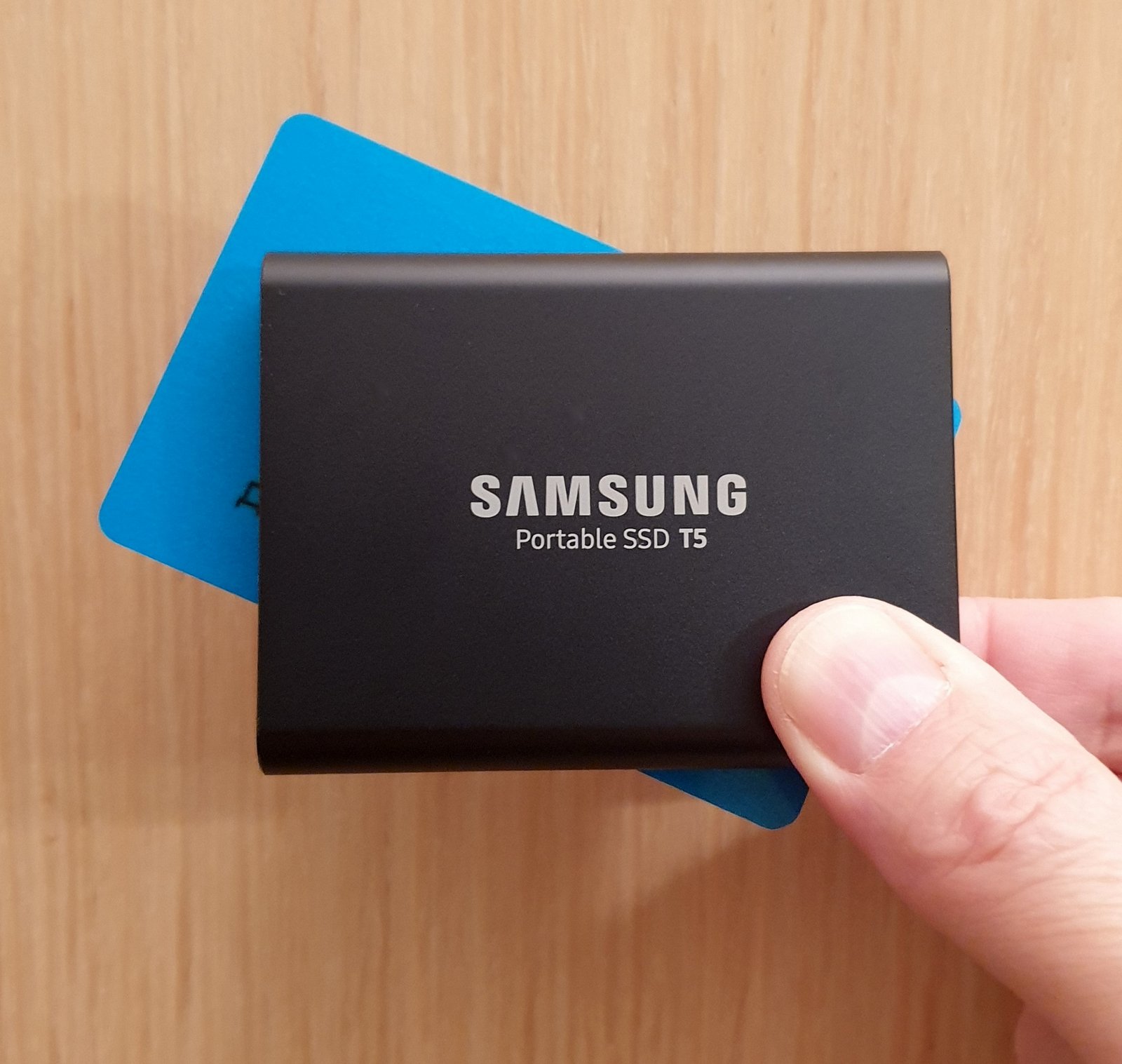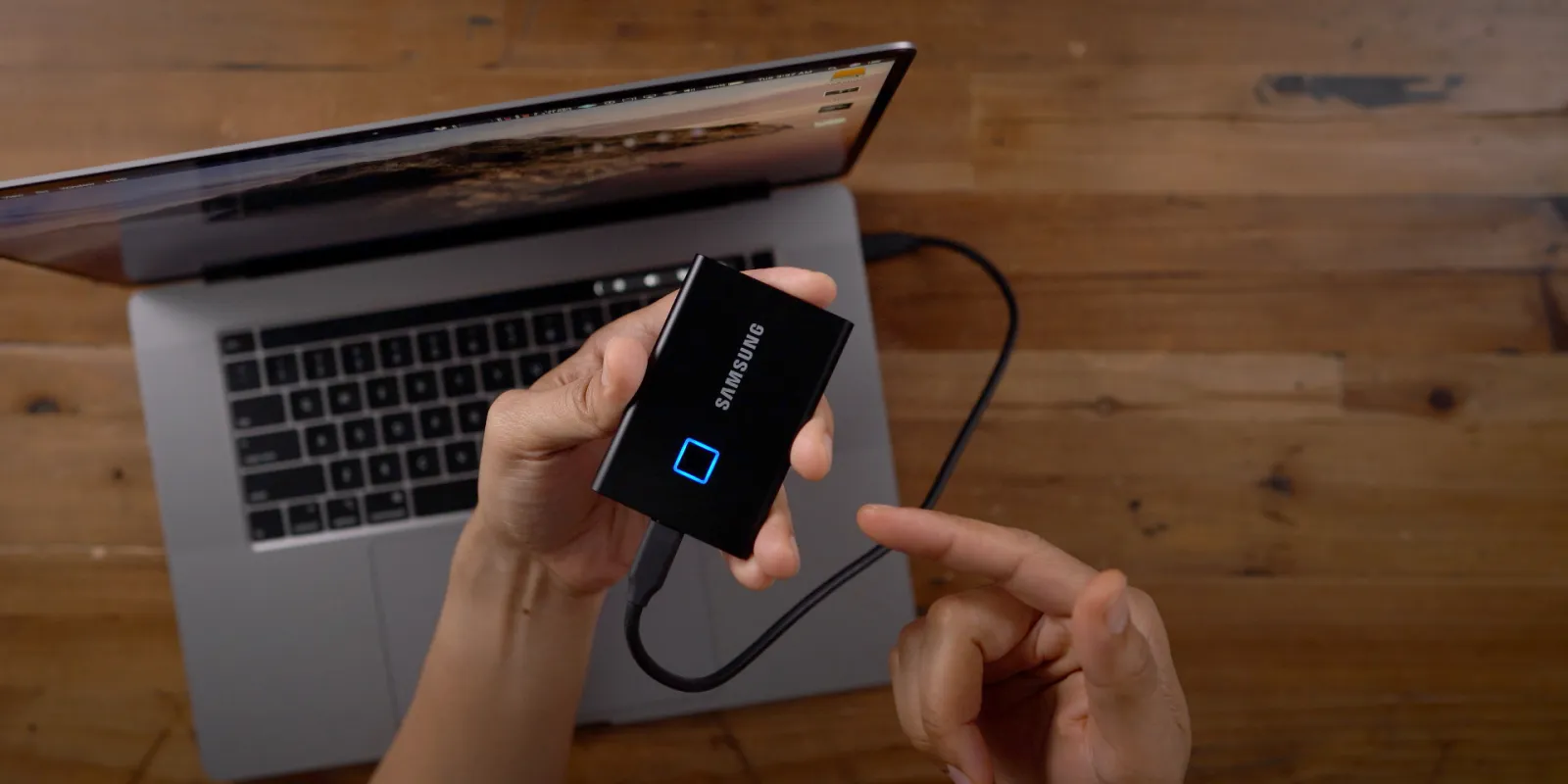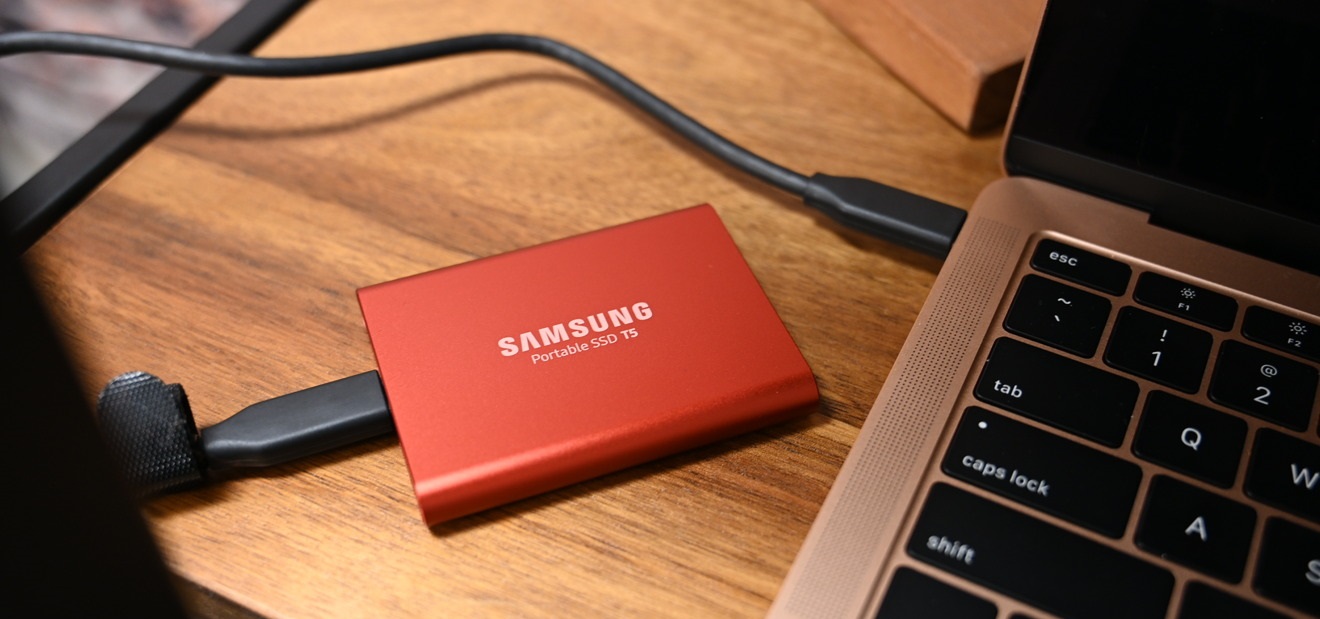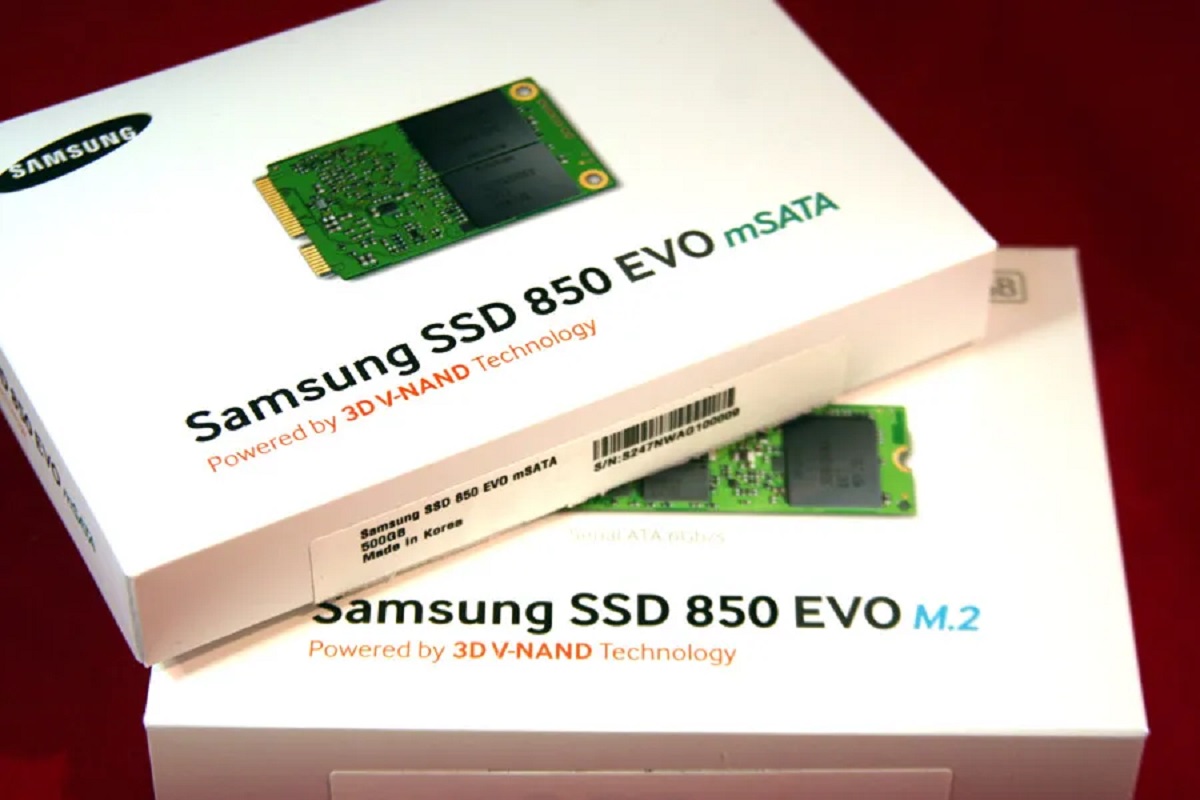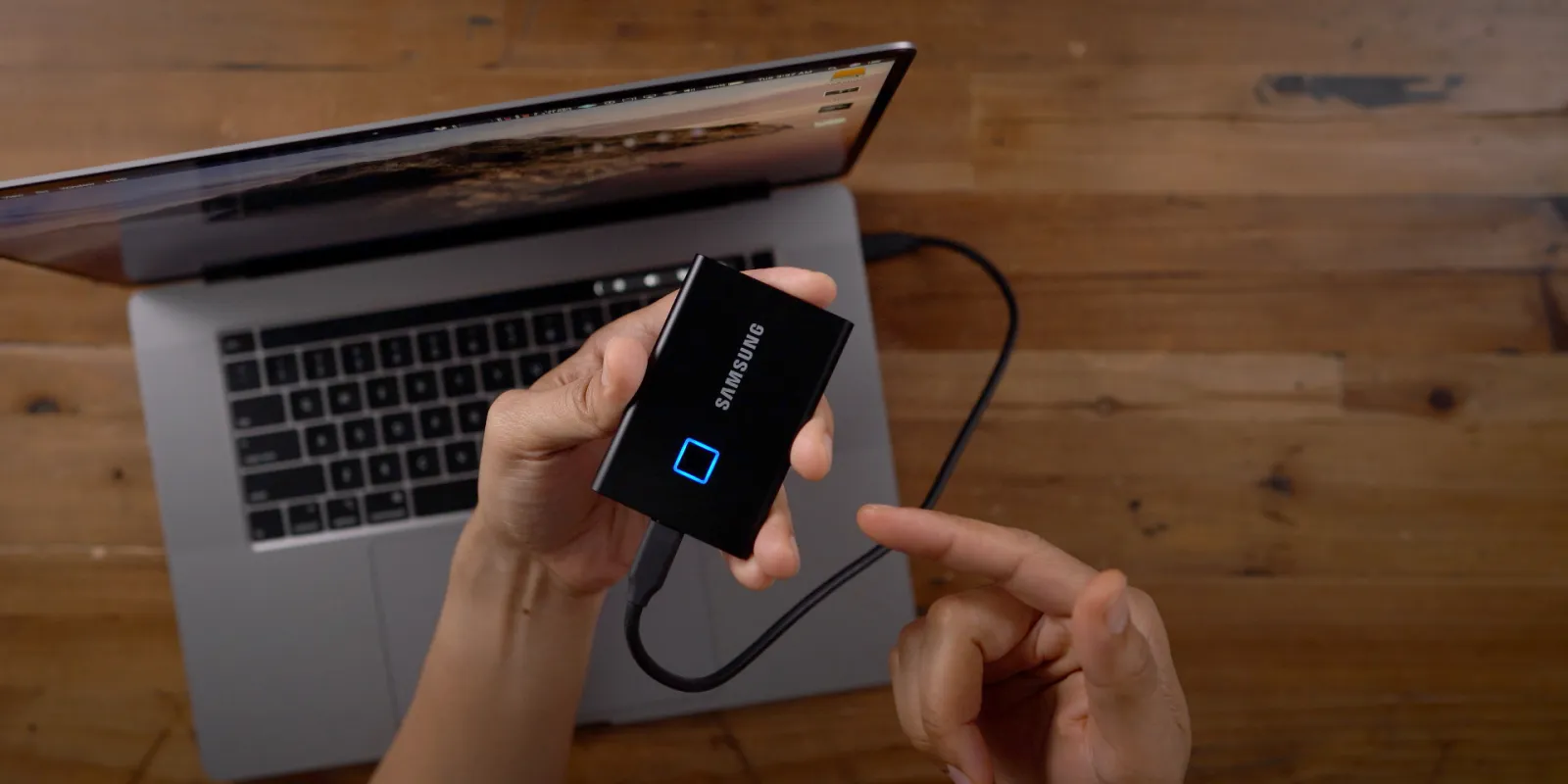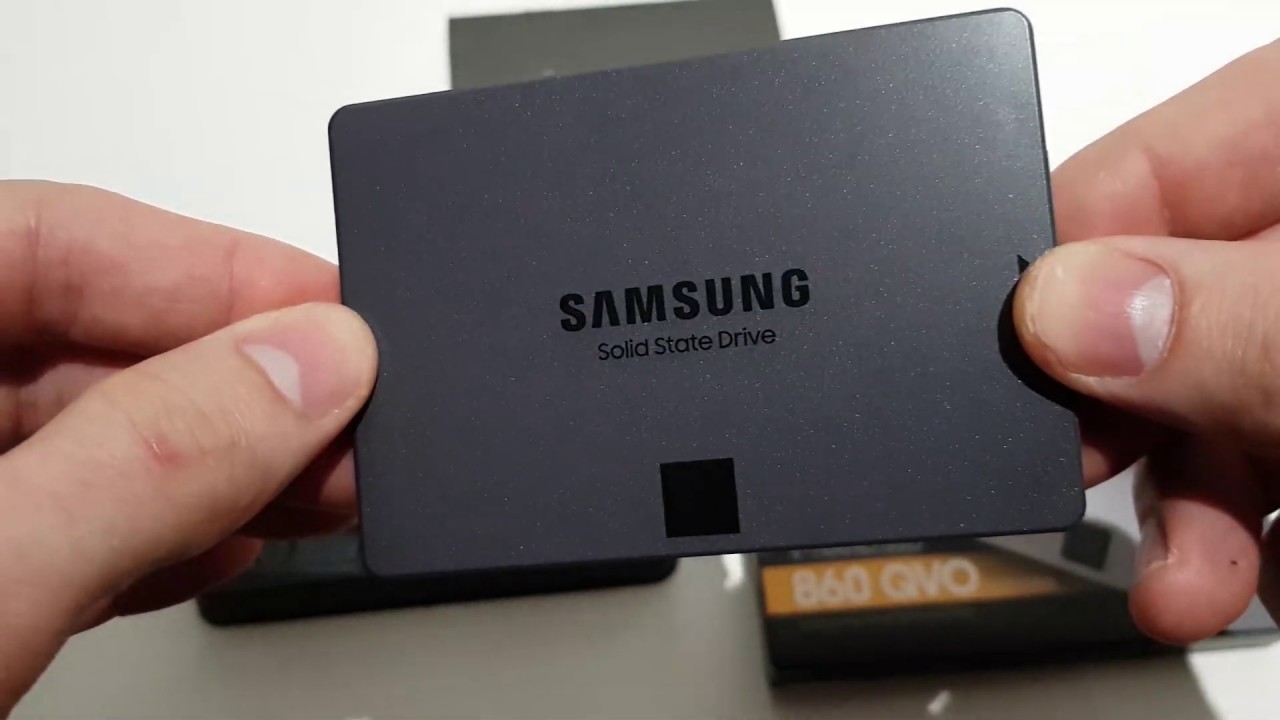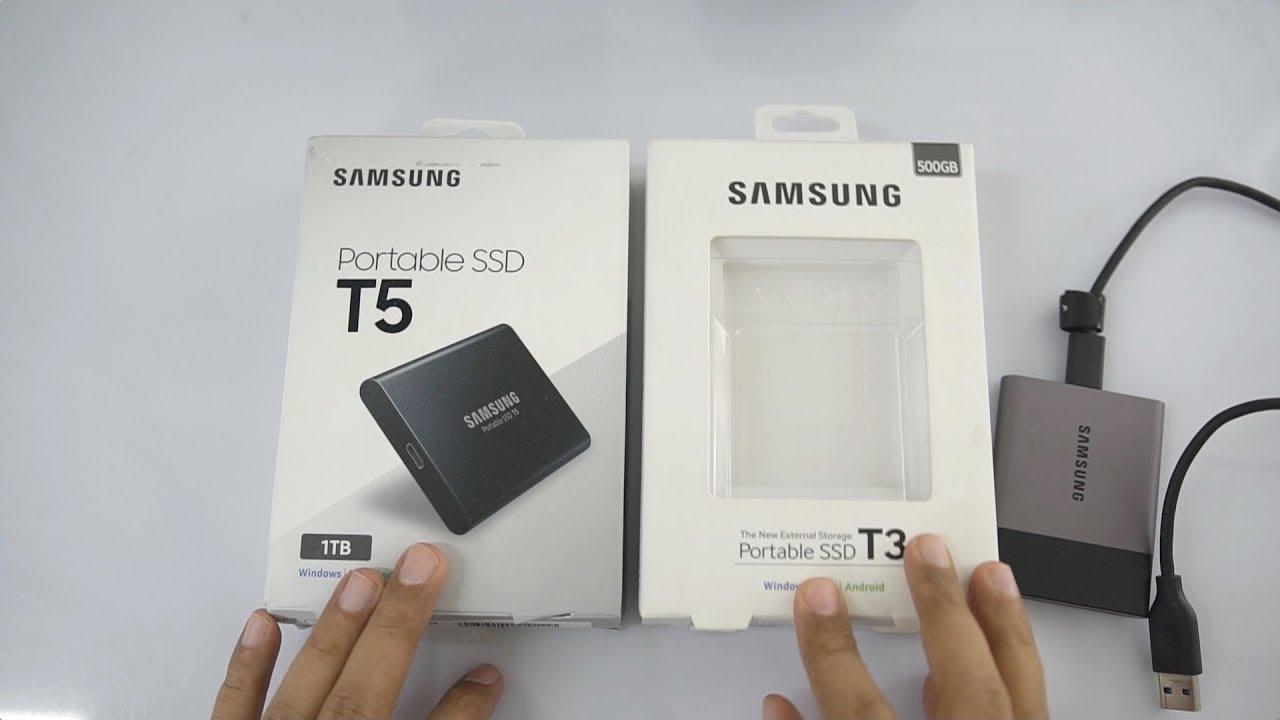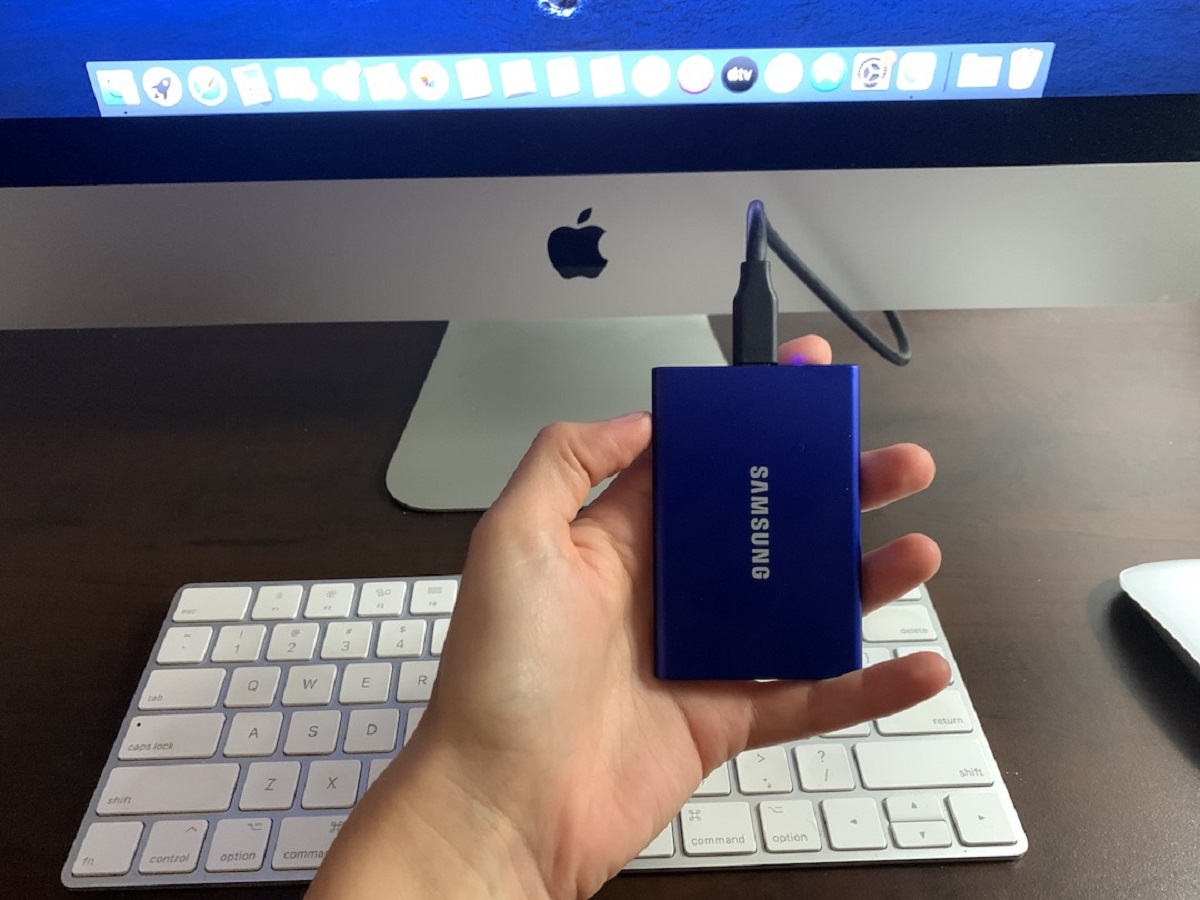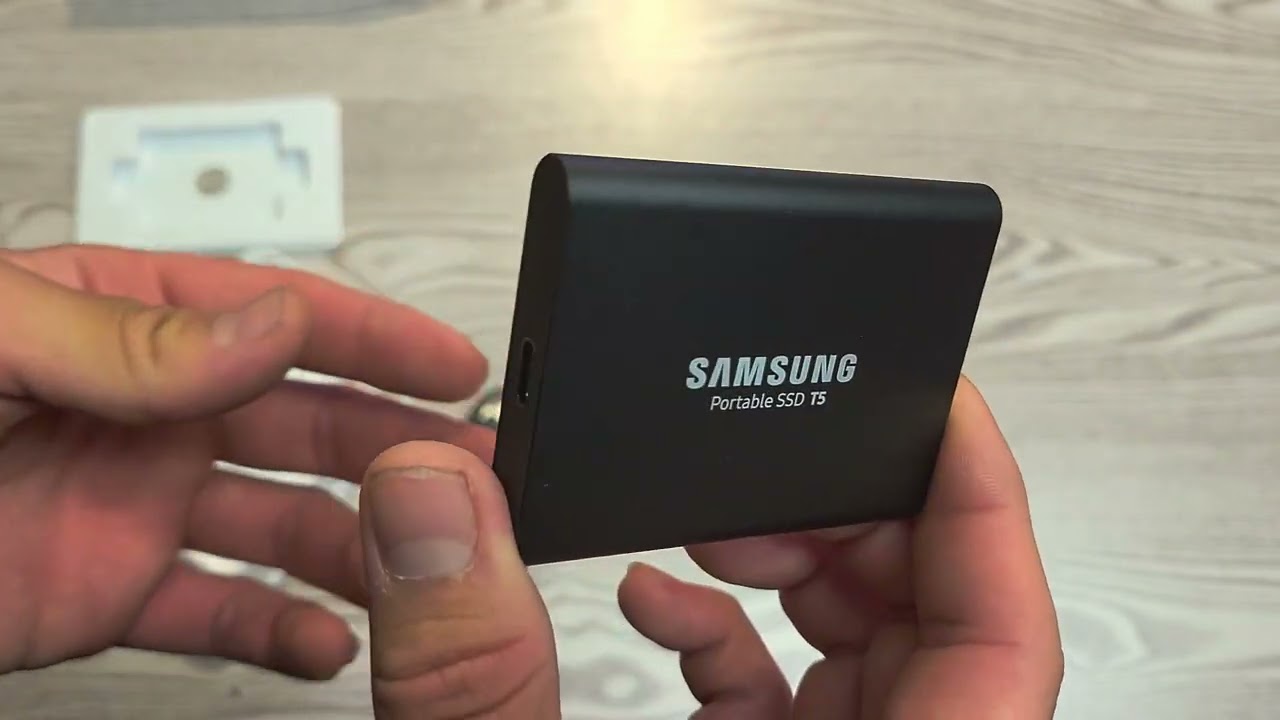Introduction
Welcome to the guide on how to format a Samsung SSD. Formatting your SSD is an essential step in optimizing its performance and ensuring that it functions properly. Whether you’re setting up a new SSD or wanting to reformat an existing one, this step-by-step tutorial will walk you through the process.
Formatting a Samsung SSD is relatively straightforward, but it’s crucial to follow the correct steps to avoid any potential issues. By formatting your SSD, you’ll be able to erase any existing data, eliminate fragmentation, and prepare the drive for a fresh installation of an operating system or the storage of your important files.
In the following sections, we’ll outline the requirements and steps needed to format your Samsung SSD. It’s important to note that formatting will erase all data on the drive, so be sure to back up any crucial files before proceeding.
Formatting your SSD is not just about creating a clean slate; it can also help improve the drive’s performance. Over time, SSDs can become fragmented, which can lead to slower read and write speeds. By formatting the SSD, you’ll be able to reallocate the space on the drive and improve its overall efficiency.
Are you ready to explore the step-by-step process of formatting your Samsung SSD? Let’s dive in and get started. Remember, pay close attention to each step and ensure that you have all the necessary requirements before proceeding.
Requirements
Before you begin formatting your Samsung SSD, it’s important to gather the necessary tools and ensure that you meet the requirements. Taking the time to prepare will help to streamline the process and minimize any potential issues.
Here are the requirements for formatting a Samsung SSD:
- A Samsung SSD: You’ll need a Samsung SSD that you intend to format. Make sure it is compatible with your computer and meets your storage needs.
- A computer: You’ll need a computer or laptop with an available SATA port to connect the SSD.
- A SATA cable: You’ll require a SATA cable to connect the Samsung SSD to your computer. Ensure that the cable is functional and in good condition.
- An operating system installation disc or USB drive: If you’re planning to reinstall an operating system after formatting, make sure you have the installation disc or a bootable USB drive available.
- Data backup: Before formatting the Samsung SSD, back up any important files and folders that you want to keep. Formatting will erase all data on the drive, so it’s crucial to have a backup to prevent data loss.
- A Phillips screwdriver: In some cases, you may need to physically install or remove the Samsung SSD from your computer. A Phillips screwdriver will be handy for this task.
It’s essential to have all these requirements in place before you begin the formatting process. By doing so, you’ll save time and ensure a smooth experience.
Now that you have all the necessary requirements, you’re ready to move on to the step-by-step process of formatting your Samsung SSD. Let’s proceed to the next section and get started!
Step 1: Back up your data
Before proceeding with the formatting process, it is crucial to back up any important data or files that you have on your Samsung SSD. Formatting will erase all the data on the drive, so it is essential to safeguard your information.
There are several ways to back up your data, depending on your preference and the amount of data you have. Here are a few methods you can consider:
- External hard drive: Connect an external hard drive to your computer and transfer all the relevant files and folders to it. Ensure that you have enough space on the external hard drive to accommodate all your data.
- Cloud storage: Upload your files to a cloud storage service such as Google Drive, Dropbox, or Microsoft OneDrive. This way, your data will be accessible from anywhere and can be easily restored after the formatting process.
- Network storage: If you have a network-attached storage (NAS) device, you can transfer your files to it for safekeeping. This option allows you to access your data over your local network.
- Another internal drive: If you have multiple drives in your computer, you can transfer your files to a different internal drive. This method is convenient if you have enough storage space available.
Whichever method you choose, ensure that you verify the integrity of your backups and double-check that all your important files have been successfully copied. Take the time to organize your data and create a backup system that suits your needs.
Once you have backed up your data, you can proceed with confidence knowing that your files are safe. In the next step, we will guide you on how to connect the Samsung SSD to your computer.
Step 2: Connect the SSD to your computer
Now that you have backed up your data, it’s time to connect your Samsung SSD to your computer. Follow these steps to ensure a proper connection:
- Turn off your computer: Before making any connections, it’s important to turn off your computer and unplug it from the power source. This will prevent any potential damage to your SSD or computer components.
- Locate the SATA ports: Open your computer case and identify the SATA ports on your motherboard. These are usually rectangular-shaped connectors labeled “SATA”.
- Prepare the SSD: If your Samsung SSD is not pre-installed in your computer, remove it from its packaging and make sure it is in good condition. If you need to install it, refer to your SSD’s documentation for guidance.
- Connect the SATA cable: Take one end of the SATA cable and plug it into an available SATA port on your motherboard. Ensure that the connection is secure and aligned properly.
- Connect the SSD: Take the other end of the SATA cable and connect it to the SATA interface on your Samsung SSD. Again, make sure the connection is secure.
- Secure the SSD: If your Samsung SSD requires mounting, use screws or brackets to attach it securely to your computer case or an SSD mounting bracket.
- Close your computer case: Once the SSD is securely connected, close your computer case and fasten any screws or clips to ensure everything is properly sealed.
After following these steps, your Samsung SSD should be successfully connected to your computer. Double-check all the connections to ensure they are secure before proceeding to the next step in the formatting process.
In the next step, we will guide you on how to initialize the SSD to prepare it for formatting. Stay tuned!
Step 3: Initialize the SSD
After connecting your Samsung SSD to your computer, the next step is to initialize the drive. Initializing the SSD prepares it for partitioning and formatting. Follow these steps:
- Power on your computer: Turn on your computer and let it boot up to the desktop.
- Open Disk Management: Press the Windows key + X on your keyboard and select “Disk Management” from the menu that appears. This will open the Disk Management utility.
- Locate your Samsung SSD: In the Disk Management window, you will see a list of all the connected drives. Look for your Samsung SSD, which may be labeled as “Disk X” or “Samsung SSD.”
- Initialize the SSD: Right-click on the Samsung SSD and select “Initialize Disk” from the context menu. A dialog box will appear, allowing you to choose between the MBR (Master Boot Record) or GPT (GUID Partition Table) partition style. Select the desired option and click “OK” to continue.
- Confirm the initialization: Once the initialization is complete, you will see a message indicating that the disk is “Online” and “Unallocated.” Click “OK” to acknowledge the message.
By initializing the Samsung SSD, you have prepared it for partitioning and formatting. However, at this stage, the drive is still unallocated and needs to be partitioned before it can be formatted.
In the next step, we will guide you on how to partition your Samsung SSD to allocate space for storage. Keep reading to learn more!
Step 4: Partition the SSD
After initializing your Samsung SSD, the next step is to partition the drive. Partitioning divides the SSD into separate sections that can be used for different purposes. Follow these steps to partition your SSD:
- Open Disk Management: Press the Windows key + X on your keyboard and select “Disk Management” from the menu that appears. The Disk Management utility will open.
- Select your Samsung SSD: In the Disk Management window, locate your Samsung SSD. It should be labeled as “Disk X” or “Samsung SSD.”
- Right-click and choose “New Simple Volume”: Right-click on the unallocated space of your Samsung SSD and select “New Simple Volume” from the context menu. The New Simple Volume Wizard will appear.
- Specify the volume size: In the New Simple Volume Wizard, specify the size of the partition you want to create. By default, the maximum available space is selected. If desired, you can adjust the size according to your requirements.
- Assign a drive letter: Select a drive letter for your partition. You can choose any available letter from the drop-down menu.
- Format the partition: Select the file system and allocation unit size for the partition. For most users, NTFS is the recommended file system and the default allocation unit size should be sufficient.
- Label the partition: Provide a name or label for the partition. This is optional and can be left blank if desired.
- Complete the partition process: Review the settings and make sure they are correct. Click “Finish” to create the partition. The Disk Management utility will format the partition and assign it the specified drive letter.
Once the partitioning process is complete, your Samsung SSD will have a partition ready for formatting and use. You can repeat these steps to create additional partitions if needed.
In the next step, we will guide you on how to format your Samsung SSD and prepare it for use. Let’s continue!
Step 5: Format the SSD
After partitioning your Samsung SSD, the next step is to format the partition. Formatting prepares the partition for data storage and creates a file system for organizing and accessing files. Follow these steps to format your Samsung SSD:
- Open Disk Management: Press the Windows key + X on your keyboard and select “Disk Management” from the menu that appears. The Disk Management utility will open.
- Locate your Samsung SSD: In the Disk Management window, find the partition on your Samsung SSD that you want to format. It should be labeled with the drive letter you assigned in the previous step.
- Right-click and choose “Format”: Right-click on the partition and select “Format” from the context menu.
- Configure the format settings: In the Format dialog box, specify the file system, allocation unit size, and volume label for the partition. For most cases, NTFS is the recommended file system, and the default allocation unit size is sufficient. You can also provide a meaningful label to easily identify the partition.
- Enable quick format: If you want to save time, ensure that the “Quick Format” option is checked. This option skips the process of checking the disk for bad sectors, resulting in a faster formatting process. However, if you suspect any issues with the SSD, it’s recommended to leave this option unchecked.
- Start the formatting process: Double-check the format settings and click “OK” to start the formatting process. A progress bar will display the formatting status.
- Wait for the formatting to complete: The time taken for formatting depends on the size of the partition and the speed of your SSD. Be patient and wait for the formatting process to complete.
- Verify the formatting: After the formatting process is finished, you will receive a confirmation message. Click “OK” to acknowledge and close the dialog box.
Once the formatting is complete, your Samsung SSD partition will be ready to use. You can now store files, install an operating system, or use it for your specific needs.
In the next step, we will guide you on how to adjust the file system settings for optimum performance. Keep reading to learn more!
Step 6: Adjust the file system
After formatting your Samsung SSD, you may want to adjust some of the file system settings to optimize its performance. While this step is optional, it can help enhance the efficiency and reliability of your SSD. Follow these guidelines to adjust the file system settings:
- Open File Explorer: Open File Explorer on your computer by pressing the Windows key + E or by clicking on the folder icon in the taskbar.
- Locate your Samsung SSD: In the left sidebar of File Explorer, you will see a list of drives. Find your Samsung SSD and click on it to select it.
- Right-click and choose “Properties”: Right-click on the Samsung SSD and select “Properties” from the context menu.
- Adjust the file system settings: In the Properties window, click on the “Tools” tab. Here, you can perform various tasks to optimize your SSD, such as:
- Optimize: Click on the “Optimize” button to consolidate and optimize the placement of files on your SSD. This can help improve read and write speeds.
- Enable write caching: In the “Hardware” tab, click on the “Properties” button and navigate to the “Policies” tab in the Device Properties window. Here, you can enable write caching to enhance write performance. However, make sure to select the option to “Enable write caching on the device” and also tick the “Turn off Windows write-cache buffer flushing on the device” option for maximum performance. Note that enabling write caching may increase the risk of data loss in the event of a power failure or sudden system shutdown.
- Enable TRIM: If your SSD supports TRIM, you can enable it by opening the Command Prompt as an administrator and entering the command “fsutil behavior set DisableDeleteNotify 0”. TRIM helps maintain SSD performance by informing the drive which blocks of data are no longer in use.
- Apply the changes: After adjusting the desired settings, click “Apply” and then “OK” to save the changes.
Adjusting the file system settings can help optimize the performance and lifespan of your Samsung SSD. However, it’s important to note that not all settings may be available or recommended for all SSD models or usage scenarios. Make sure to refer to the documentation provided by Samsung or consult their support resources for specific recommendations for your device.
In the next step, we will guide you on how to assign a drive letter to your Samsung SSD. Stay tuned!
Step 7: Assign a drive letter
After adjusting the file system settings, the final step is to assign a drive letter to your Samsung SSD. Assigning a drive letter allows you to easily identify and access your SSD in File Explorer. Follow these steps:
- Open Disk Management: Press the Windows key + X on your keyboard and select “Disk Management” from the menu that appears. The Disk Management utility will open.
- Locate your Samsung SSD: In the Disk Management window, locate your Samsung SSD that you formatted earlier. It should have an allocated partition, but it may not have a drive letter assigned to it.
- Right-click and choose “Change Drive Letter and Paths”: Right-click on the partition of your Samsung SSD and select “Change Drive Letter and Paths” from the context menu.
- Assign a drive letter: In the new window that opens, click on the “Add” button. This will allow you to assign a new drive letter to the partition.
- Choose a drive letter: Select an available drive letter from the drop-down menu. You can choose any unused letter that you prefer.
- Confirm the assignment: Click “OK” to confirm the drive letter assignment. A warning message may appear informing you that changing the drive letter may cause programs to no longer run. If you have any installed programs on the SSD, make sure to update their file paths accordingly.
- Verify the drive letter: After confirming the drive letter assignment, you should see the Samsung SSD partition with the assigned drive letter in Disk Management. You can also check File Explorer to ensure that the drive letter is visible.
By assigning a drive letter, you can easily access your Samsung SSD and its contents in File Explorer. You can now start using the SSD for storing files, installing applications, or any other intended purpose.
Congratulations! You have successfully formatted your Samsung SSD and completed all the necessary steps. Your SSD is now ready for use.
Conclusion
Congratulations on successfully formatting your Samsung SSD! By following the step-by-step guide provided in this tutorial, you have prepared your SSD for optimal performance and data storage.
Remember, formatting your SSD is an essential step to maximize its efficiency and ensure it functions properly. By backing up your data, connecting the SSD to your computer, initializing and partitioning the drive, formatting the partition, adjusting the file system settings, and assigning a drive letter, you have set up your Samsung SSD for success.
Formatting your SSD not only provides a clean slate for storing files and installing an operating system but also helps improve the overall performance of the drive. With the right file system settings and regular maintenance, your Samsung SSD can deliver fast and reliable storage for your data and applications.
Keep in mind that whenever you need to format or reformat your Samsung SSD, it is crucial to back up your important data to prevent any potential loss. Always stay cautious and double-check your actions during the formatting process.
We hope this guide has been helpful in assisting you with formatting your Samsung SSD. If you encounter any issues or have further questions, referring to the Samsung documentation or contacting their support team can provide you with additional guidance.
Thank you for following along with this tutorial, and we wish you the best of luck with your newly formatted Samsung SSD!







